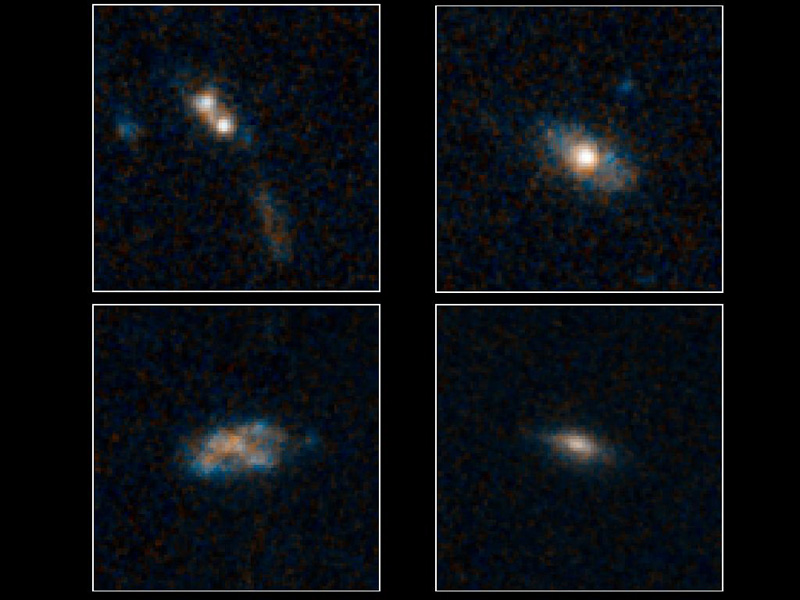The galaxies pictured here have so much dust surrounding them that the brilliant light from their quasars cannot be seen in these images NASA’s Hubble Space Telescope. Quasars are the brilliant beacons of light that are powered by black holes feasting on captured material, and in the process, heating some of the matter to millions of degrees. (Image credit: NASA/ESA/Yale)
Home The galaxies pictured here have so much dust surrounding them that the brilliant light from their quasars cannot be seen in these images NASA’s Hubble Space Telescope. Quasars are the brilliant beacons of light that are powered by black holes feasting on captured material, and in the process, heating some of the matter to millions of degrees. (Image credit: NASA/ESA/Yale) The galaxies pictured here have so much dust surrounding them that the brilliant light from their quasars cannot be seen in these images NASA's Hubble Space Telescope. Quasars are the brilliant beacons of light that are powered by black holes feasting on captured material, and in the process, heating some of the matter to millions of degrees. (Image credit: NASA/ESA/Yale)
The galaxies pictured here have so much dust surrounding them that the brilliant light from their quasars cannot be seen in these images NASA’s Hubble Space Telescope. Quasars are the brilliant beacons of light that are powered by black holes feasting on captured material, and in the process, heating some of the matter to millions of degrees. (Image credit: NASA/ESA/Yale)


